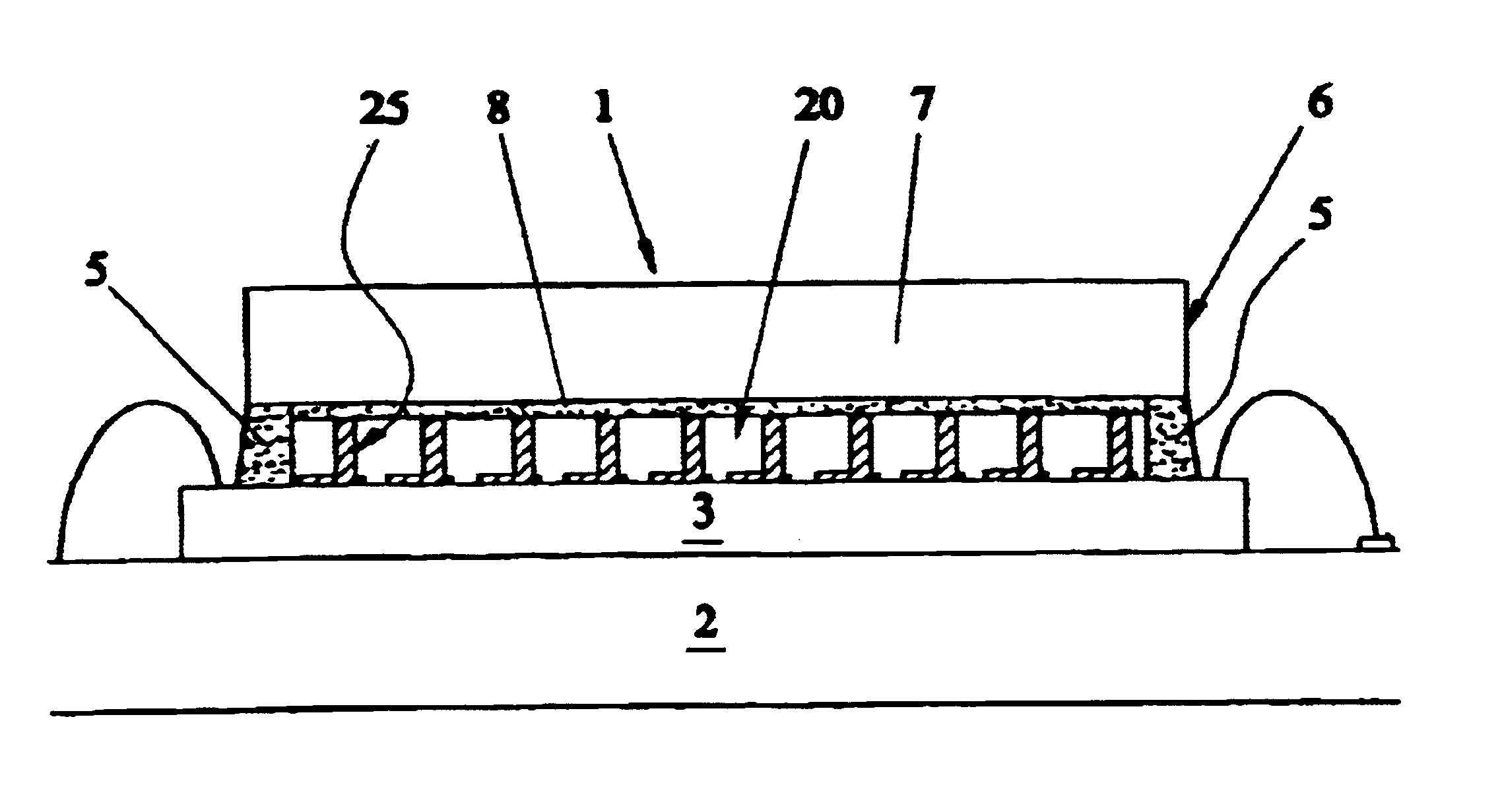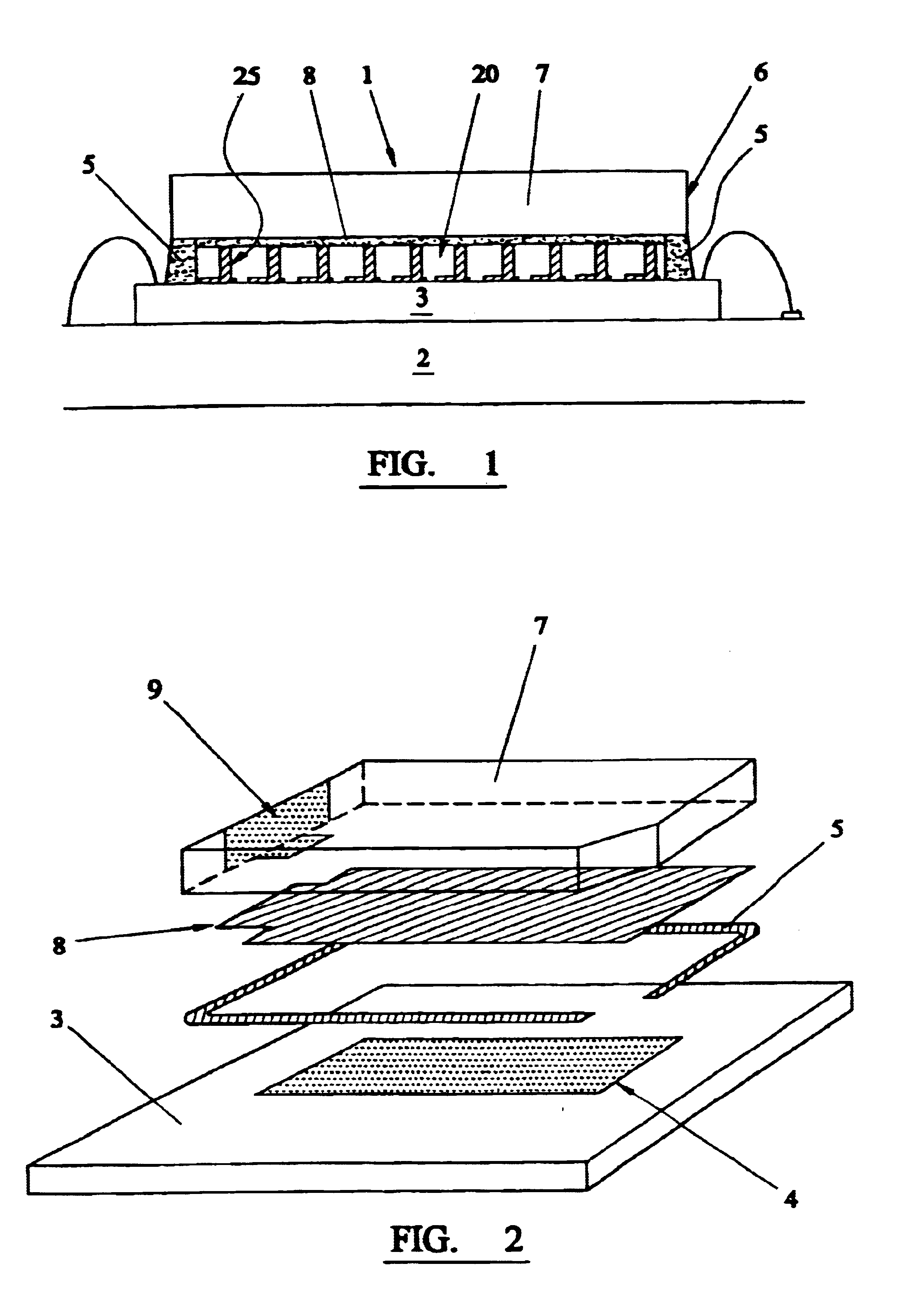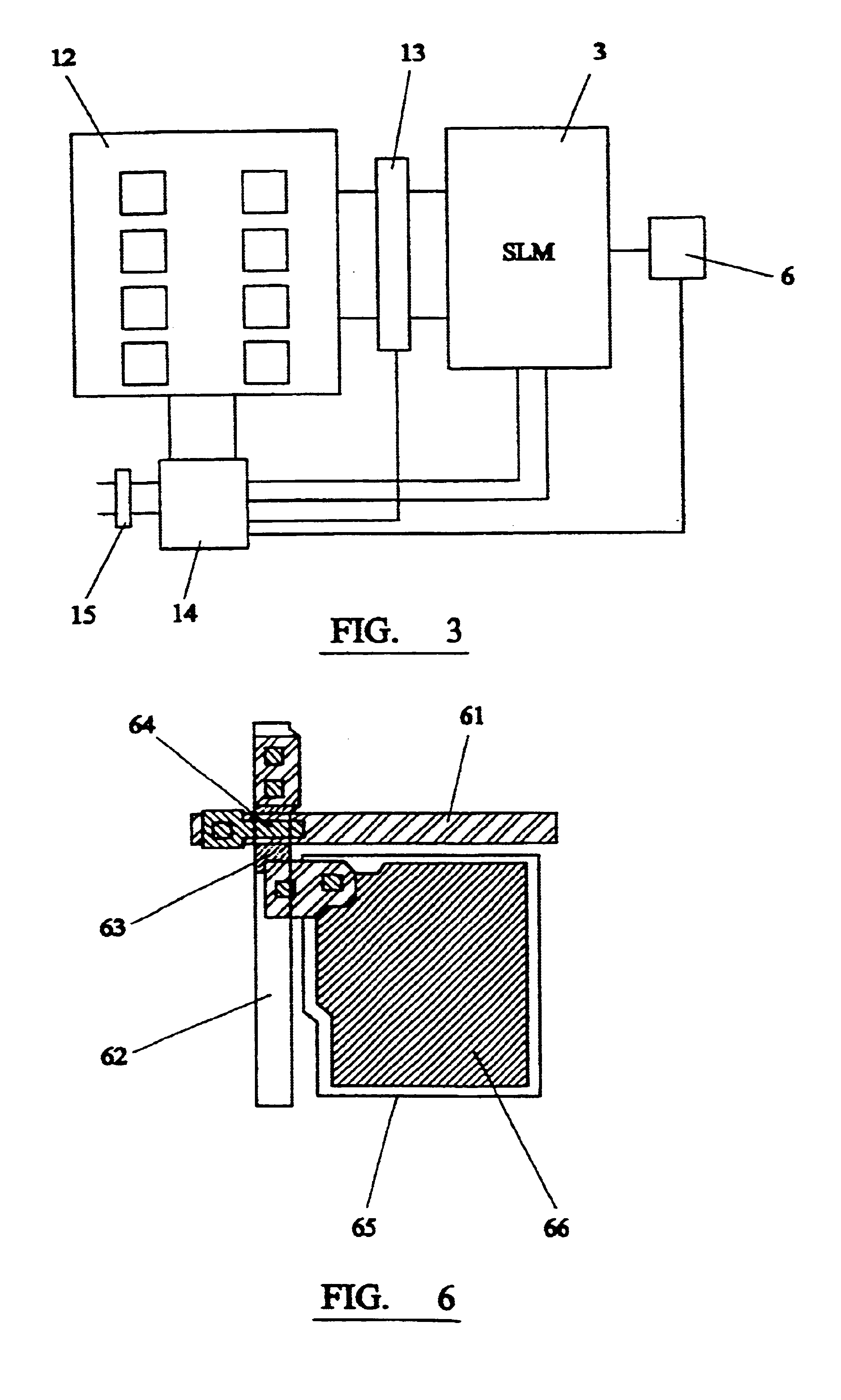Methods of driving an array of optical elements
an array and optical element technology, applied in the field of methods of driving arrays of optical elements, can solve the problems of image sticking, slow operation of cells, and a short life, and achieve the effects of avoiding image sticking, avoiding image sticking, and avoiding image sticking
- Summary
- Abstract
- Description
- Claims
- Application Information
AI Technical Summary
Benefits of technology
Problems solved by technology
Method used
Image
Examples
Embodiment Construction
FIG. 1 shows in schematic cross-sectional view a liquid crystal cell 1 mounted on a thick film alumina hybrid substrate or chip carrier 2. The cell 1 is shown in exploded view in FIG. 2. The use of a hybrid substrate for mounting electro-optic devices is discussed in more detail in our copending application PCT / GB99 / 04285, ref: P20957WO.
Cell 1 comprises an active silicon backplane 3 in which a central region is formed to provide an array 4 of active mirror pixel elements arranged in 320 columns and 240 rows. Outside the array, but spaced from the edges of the backplane 3, is a peripheral glue seal 5, which seals the backplane 3 to the peripheral region of a front electrode 6. FIG. 2 shows that the glue seal is broken to permit insertion of the liquid crystal material into the assembled cell, after which the seal is completed, either by more of the same glue, or by any other suitable material or means known per se.
Front electrode 6 comprises a generally rectangular planar glass or si...
PUM
| Property | Measurement | Unit |
|---|---|---|
| thickness | aaaaa | aaaaa |
| cone angle | aaaaa | aaaaa |
| cone angle | aaaaa | aaaaa |
Abstract
Description
Claims
Application Information
 Login to View More
Login to View More - R&D
- Intellectual Property
- Life Sciences
- Materials
- Tech Scout
- Unparalleled Data Quality
- Higher Quality Content
- 60% Fewer Hallucinations
Browse by: Latest US Patents, China's latest patents, Technical Efficacy Thesaurus, Application Domain, Technology Topic, Popular Technical Reports.
© 2025 PatSnap. All rights reserved.Legal|Privacy policy|Modern Slavery Act Transparency Statement|Sitemap|About US| Contact US: help@patsnap.com



